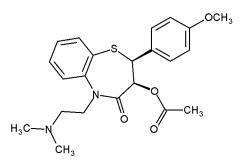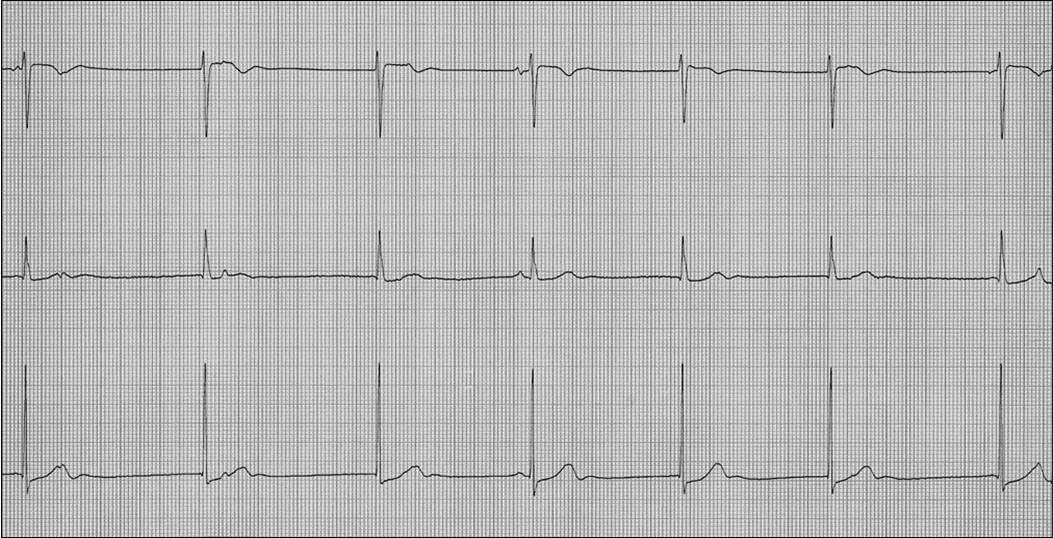Calcium channel blocker
Editor-In-Chief: C. Michael Gibson, M.S., M.D. [1]
Overview
Calcium channel blockers are a class of drugs and natural substances with effects on many excitable cells of the body, like the muscle of the heart, smooth muscles of the vessels or neuron cells. The latter are used as antiepileptics and are not covered in this article.
The main action of calcium channel blockers is to decrease the blood pressure. It is for this action that it is used in individuals with hypertension.
Explanation
Most calcium channel blockers decrease the force of contraction of the myocardium (muscle of the heart). This is known as the negative inotropic effect of calcium channel blockers. It is because of the negative inotropic effects of most calcium channel blockers that they are avoided (or used with caution) in individuals with cardiomyopathy.
Many calcium channel blockers also slow down the conduction of electrical activity within the heart, by blocking the calcium channel during the plateau phase of the action potential of the heart (see: cardiac action potential). This is known as a negative dromotropic effect. It causes a lowering of the heart rate and may cause heart blocks, which is known as the negative chronotropic effect of calcium channel blockers. The negative chronotropic effects of calcium channel blockers make them a commonly used class of agents in individuals with atrial fibrillation or flutter in whom control of the heart rate is an issue.
Mechanism of action
Calcium channel blockers work by blocking L-type voltage-gated calcium channels (VGCCs) in muscle cells of the heart and blood vessels. This prevents calcium levels from increasing as much in the cells when stimulated, leading to less muscle contraction. In the heart, a decrease in calcium available for each beat results in a decrease in cardiac contractility. In blood vessels, a decrease in calcium results in less contraction of the vascular smooth muscle and therefore an increase in blood vessel diameter, a phenomenon called vasodilation. Vasodilation decreases total peripheral resistance, while a decrease in cardiac contractility decreases cardiac output. Since blood pressure is in part determined by cardiac output and peripheral resistance, blood pressure drops.
With a relatively low blood pressure, the afterload on the heart decreases; this decreases the amount of oxygen required by the heart. This can help ameliorate symptoms of ischemic heart disease such as angina pectoris.
Unlike β-blockers, calcium channel blockers do not decrease the responsiveness of the heart to input from the sympathetic nervous system. Since moment-to-moment blood pressure regulation is carried out by the sympathetic nervous system (via the baroreceptor reflex), calcium channel blockers allow blood pressure to be maintained more effectively than do β-blockers.
However, because calcium channel blockers result in a decrease in blood pressure, the baroreceptor reflex often initiates a reflexive increase in sympathetic activity leading to increased heart rate and contractility. A β-blocker may be combined with a calcium channel blocker to minimize these effects.
Classes
Dihydropyridine
Dihydropyridine calcium channel blockers are derived from the molecule dihydropyridine and often used to reduce systemic vascular resistance and arterial pressure. Sometimes when they are used to treat angina, the vasodilation and hypotension can lead to reflex tachycardia, which can be detrimental for patients with ischemic symptoms because of the resulting increase in myocardial oxygen demand). Dihydropyridine calcium channel blockers can worsen proteinuria in patients with nephropathy.[1]
This CCB class is easily identified by the suffix "-dipine".
- Amlodipine (Norvasc)
- Aranidipine (Sapresta)
- Azelnidipine (Calblock)
- Barnidipine (HypoCa)
- Benidipine (Coniel)
- Cilnidipine (Atelec, Cinalong, Siscard) Not available in US
- Clevidipine (Cleviprex)
- Isradipine (DynaCirc, Prescal)
- Efonidipine (Landel)
- Felodipine (Plendil)
- Lacidipine (Motens, Lacipil)
- Lercanidipine (Zanidip)
- Manidipine (Calslot, Madipine)
- Nicardipine (Cardene, Carden SR)
- Nifedipine (Procardia, Adalat)
- Nilvadipine (Nivadil)
- Nimodipine (Nimotop) This substance can pass the blood-brain barrier and is used to prevent cerebral vasospasm.
- Nisoldipine (Baymycard, Sular, Syscor)
- Nitrendipine (Cardif, Nitrepin, Baylotensin)
- Pranidipine (Acalas)
Side effects of these drugs may include but are not limited to:
- Dizziness, headache, redness in the face
- Fluid buildup in the legs and ankle edema
- Rapid heart rate
- Slow heart rate
- Constipation
- Gingival overgrowth
Non-dihydropyridine
Phenylalkylamine

Phenylalkylamine calcium channel blockers are relatively selective for myocardium, reduce myocardial oxygen demand and reverse coronary vasospasm, and are often used to treat angina. They have minimal vasodilatory effects compared with dihydropyridines and therefore cause less reflex tachycardia, making it appealing for treatment of angina, where tachycardia can be the most significant contributor to the heart's need for oxygen. Therefore, as vasodilation is minimal with the phenylalkylamines, the major mechanism of action is causing negative inotropy. Phenylalkylamines are thought to access calcium channels from the intracellular side, although the evidence is somewhat mixed.[2]
- Verapamil (Calan, Isoptin)
- Gallopamil
- Fendiline
Benzothiazepine

Benzothiazepine calcium channel blockers belong to the benzothiazepine class of compounds and are an intermediate class between phenylalkylamine and dihydropyridines in their selectivity for vascular calcium channels. By having both cardiac depressant and vasodilator actions, benzothiazepines are able to reduce arterial pressure without producing the same degree of reflex cardiac stimulation caused by dihydropyridines.
- Diltiazem (Cardizem) (also used experimentally to prevent migraine)
Nonselective
While most of the agents listed above are relatively selective, there are additional agents that are considered nonselective. These include mibefradil, bepridil, flunarizine (BBB crossing), fluspirilene (BBB crossing),[3] and fendiline.[4]
Ziconotide
Ziconotide, a peptide compound derived from the omega-conotoxin, is a selective N-type calcium channel blocker that has potent analgesic properties that are equivalent to approximate 1,000 times that of morphine. It must be delivered via the intrathecal (directly into the cerebrospinal fluid) route via an intrathecal infusion pump.
Other
- Menthol (mint oil)
Drug-drug interactions
An October 2008 Austrian study demonstrates that calcium-channel blockers (CCBs) reduce the antiplatelet effect of clopidogrel. The study examined the interaction by comparing the platelet reactivity index (PRI) (as determined by vasodilator-stimulated phosphoprotein (VASP) phosphorylation assay) for 200 patients with coronary artery disease who were undergoing percutaneous coronary intervention. Patients taking concomitant CCBs and clopidogrel had displayed a PRI of 61%, while patients receiving clopidogrel alone demonstrated a PRI of 48% (absolute difference 13%; 95% CI: 6% to 20%; p = 0.001). The relative difference between the two sets of patients was approximately 21%. An in vitro experiment involving the incubation of blood from 10 additional patients, who received clopidogrel alone, with CCBs showed no difference in the PRI. This finding led the research team to hypothesize that the CCBs block the in vivo bioactivation of clopidogrel by the cytochrome P450 isoform 3A4. The majority of patients in the CCB subset received amlodipine, so additional studies are required to help establish a class effect.[5]
Calcium Channel Blocker Overdose
Electrocardiogram
Shown below is the image of EKG in a patient of calcium channel blocker overdose demonstrating bradycardia with heart rate of 35

Other drugs with similar uses
Other classes of pharmaceutical agents that have overlapping effects as calcium channel blockers include ACE inhibitors, beta-blockers, and nitrates.
Related Chapter
References
- ↑ Remuzzi G, Scheppati A, Ruggenenti P (2002). "Clinical Practice. Nephropathy in Patients with Type 2 Diabetes". New England Journal of Medicine. 346 (15): 1145–1151. doi:10.1056/NEJMcp011773. PMID 11948275.
- ↑ Hockerman, G.H.; Peterson, B.Z.; Johnson, B.D.; Catterall, W.A. (1997). "Molecular Determinants of Drug Binding and Action on L-Type Calcium Channels". Annual Review of Pharmacology and Toxicology. 37: 361–396. doi:10.1146/annurev.pharmtox.37.1.361. PMID 9131258.
- ↑ Bezprozvanny I, Tsien RW (1995). "Voltage-Dependent Blockade of Diverse Types of Voltage-Gated Ca2+ Channels Expressed in Xenopus Oocytes by the Ca2+ Channel Antagonist Mibefradil (Ro 40-5967)". Molecular Pharmacology. 48 (3): 540–549. PMID 7565636.
- ↑ Scultéty S, Tamáskovits E (1991). "Effect of Ca2+ Antagonists on Isolated Rabbit Detrusor Muscle". Acta Physiologica Hungarica. 77 (3–4): 269–278. PMID 1755331.
- ↑ Jolanta M. Siller-Matula, Irene Lang, Guenter Christ, and Bernd Jilma (2008). "Calcium-Channel Blockers Reduce the Antiplatelet Effect of Clopidogrel". JACC. 52 (19): 1557–1563. doi:10.1016/j.jacc.2008.07.055.
Template:Calcium channel blockers Template:PAH rx
ar:حاصرات قنوات الكالسيوم
de:Calciumantagonist
it:Calcio antagonisti
nl:Calciumantagonist
th:แคลเซียมแชนแนลบล็อกเกอร์